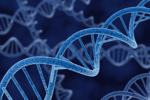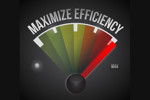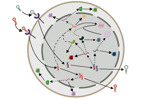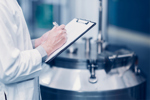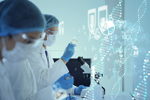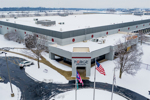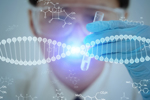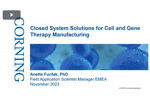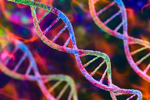Gene Therapy Manufacturing
Gene therapies carry the potential to treat numerous serious diseases and conditions, including genetic disorders, rare diseases, and certain cancers. Manufacturing these therapies for use in clinical trials or commercially is an intricate, multi-stage process requiring dedicated facilities, expertise, and stringent QC measures to ensure patients receive safe, effective therapeutics.
Table Of Contents:
- Introduction To The Gene Therapy Manufacturing Process
- Common Gene Therapy Manufacturing Challenges
- Gene Therapy Manufacturing Facilities
- Scaling Up For Commercialization
- Innovations And The Future Of Gene Therapy Manufacturing
- Conclusion
- Frequently Asked Questions (FAQs)
Introduction To The Gene Therapy Manufacturing Process
Gene therapies use viral vectors to deliver therapeutic genes to patients, and the manufacturing process is highly complex. First, plasmids are developed to carry the genes encoding viral vectors. Next, cells are selected and expanded to produce the viral vectors before the plasmid is introduced via transfection. Finally, the vectors are generated before being harvested, filtered, and purified to isolate the therapeutic genes. The final product is carefully filled and finished before undergoing specialized storage and shipping conditions that keep the therapeutics at extremely low temperatures to avoid degradation.
Gene Therapy Upstream Processing
The upstream processing stage of gene therapy manufacturing produces viral vectors suitable for human use. Throughout the stages outlined below, adhering to GMP standards and optimizing scalability is crucial to ensuring high yields of safe, effective drug products.
Plasmid Development And Production
Plasmids are the building blocks for viral vectors and are carefully designed to carry the genes encoding these vectors. Plasmids are produced in large bioreactors using host cells such as E. coli and scaled up to generate sufficient biomass. Processes like alkaline lysis harvest the plasmid DNA before it undergoes further purification to meet quality and regulatory standards.
Cell Expansion
In this stage, cells are selected and grown to produce the viral vectors using a master cell bank and working cell bank. Cell culture media is formulated to create the ideal conditions for the particular cell and therapeutic type, and cells are expanded in bioreactors under controlled conditions to maximize growth.
Plasmid Transfection
Transfection introduces plasmids into the producer cells, typically using HEK293 cells as the host. Three plasmids are delivered into the cell: two carry viral genes, and the third carries the therapeutic gene. This process relies on well-established, scalable transfection methods for large-volume production.
Vector Production
Finally, the transfected cells create the viral vectors carrying the therapeutic gene through a variety of methods, depending on the specific viral vector, including:
- Stable packaging cell lines have the integrated genes necessary to make viral particles, e.g., Gag/Pol and envelope genes. The vector sequence is introduced via a virus or plasmid. These specialized cell lines provide consistent production but can be challenging to develop.
- Transient transfection introduces multiple plasmids into producer cells, often HEK293, to generate viral vectors, which provides flexibility but is less scalable than other approaches.
- Infection-based systems like the baculovirus expression vector (BEV) system use insect cells infected with engineered baculoviruses to produce viral vectors. BEV systems produce high yields but can result in lower infectivity due to non-mammalian post-translational modifications.
Gene Therapy Downstream Processing
Downstream gene therapy processing represents the lion's share of manufacturing costs due to its complexity and variability. For instance, separating full capsids containing the therapeutic DNA from empty capsids presents a significant challenge. Likewise, maintaining vector stability and infectivity throughout the downstream process is another hurdle. New technologies aim to increase the scalability of purification methods, reduce purification times, and increase recovery yields. The main steps in this critical process include:
Harvesting And Clarification
Viral vectors are harvested and clarified to remove contaminants and cell debris, but the systems used can vary. Harvesting adherent cell cultures entails collecting the supernatant containing the viral vectors, but a cell lysis step releases intracellular viral vectors for suspension cultures.
Once harvested, the vectors are clarified through a combination of techniques. Depth filtration is generally the first step, especially for high-turbidity feeds, while glass fiber filters offer high throughput and good viral vector recovery for lentiviral vectors.
A secondary clarification step is often required to remove more unwanted particles. After depth filtration, a bioburden reduction step using 0.45 μm or 0.2 μm membrane filters removes smaller particles and reduces microbial contamination.
Alternatively, centrifugation can clarify the harvested cells, but it is more difficult to scale up to commercial levels. Manufacturers can also use a combination of filtration and centrifugation methods.
Capture And Initial Purification
Next, vectors are further purified, often through ultrafiltration/diafiltration (UF/DF) or nanofiltration, which provides concentration and buffer exchange. Chromatography methods also purify the product and are selected based on the vector type, cost considerations, and compatibility with other downstream processes. For instance, ion exchange chromatography (IEX) separates particles based on charge, while affinity chromatography provides precise separation using ligands that bind to viral capsids.
Purification And Polishing
Further chromatography steps continue to remove process-related impurities from the vector. Affinity chromatography is commonly used as a capture step, binding the viral vectors while allowing contaminants to flow through. IEX, particularly anion exchange chromatography (AEX), is frequently used for AAV serotypes. Additionally, density gradient ultracentrifugation, like cesium chloride gradients, can provide further purification.
Next, the polishing stage removes product-related impurities and separates the full capsids containing therapeutic DNA from the empty capsids. Additional chromatography steps, such as size exclusion chromatography (SEC) or AEX, are often used in this stage. Depending on the viral vector type and serotype, ultracentrifugation may be used for polishing.
Final Filtration
The final filtration step typically uses UF/DF to concentrate the viral vectors into the desired final product titer, transfer the product into the final formulation buffer, remove any remaining small molecule impurities, and ensure sterility before filling and packaging.
Formulation Challenges
Formulating gene therapies is a delicate balancing act that weighs several critical factors to determine the ideal approach. First, developers consider vector stability vs. aggregation, proteolysis, and oxidation. The vector must also evade host immune responses, meet quality and purity standards, and be free of contaminants.
The formulation must also remain stable during storage and transportation. Many gene therapies are personalized medicines; tailoring formulations to specific patient needs is another complication. Manufacturers address these challenges by carefully optimizing excipients, storage conditions, and delivery methods to maintain vector activity and therapeutic efficacy while meeting regulatory requirements.
Fill/Finish Considerations
Fill/finish ensures product quality, safety, and efficacy by maintaining vector stability, achieving precise dosing, and preserving sterility. A final filtration step removes impurities before the product is dispensed into containers, relying on aseptic processes to prevent contamination. Robotics, automation, and single-use systems (SUS) are increasingly used to enhance accuracy and reduce contamination risks.
Common Gene Therapy Manufacturing Challenges
Successfully manufacturing gene therapies entails meeting competing logistical challenges head-on to optimize processes and mitigate costs. Increased R&D and collaboration between industry, academia, and regulatory bodies is key to improving processes and expanding accessibility.
Meeting Technical Challenges
Producing gene therapies is a highly technical undertaking that must be designed to meet the following technical difficulties:
Scalability
Scaling up production from the lab to commercial levels remains a serious obstacle to gene therapy manufacturing. Equipment, protocols, and QA measures all must be modified to create consistent, safe batches at higher volumes. However, many processes still rely on labor-intensive manual steps, which are difficult to scale.
Cell Line And Vector Systems Variability
Due to their biological nature, cell lines and vector systems are highly variable, with up to ten-fold differences between subtypes. This variability affects the purity and potency of the final product, influencing the ratio of full to empty capsids and the therapy's overall efficacy, making standardization a significant obstacle. Manufacturers need adaptable processes to ensure the final product is reproducible.
Transient transfection systems offer flexibility but require large amounts of reagents and genetic material, which are difficult to scale. By contrast, stable producer cell lines improve batch-to-batch reproducibility but have long development timelines and are less flexible. Manufacturers need significant expertise in the specific process, parent vector, and subtype to optimize these processes and achieve high yields.
Emerging strategies, such as optimizing cell line development, improving vector design, and implementing advanced bioprocessing technologies, are working to enhance consistency and scalability in gene therapy production.
Genetic Modification Techniques’ Complexity
Gene editing is an intricate process involving sensitive materials that requires careful optimization to scale up to commercial levels. These processes also demand specialized expertise and dedicated resources, which increase production timelines and costs. To further complicate matters, genetic modification’s inherent complexity makes it difficult to maintain consistent quality across batches, necessitating robust QC measures to meet stringent regulatory requirements.
Mitigating Regulatory And Compliance Challenges
All production processes must be rigorously documented to meet regulatory standards, making it difficult to alter manufacturing methods once production has begun. Additionally, companies must navigate complex GMP compliance requirements across different regions. The exact regulatory standards also vary according to therapy and indication, complicating the approval process.
Regulatory bodies, including the FDA and EMA, provide guidance for gene therapy manufacturing to safeguard patient safety and drug efficacy. The FDA and EMA regulations for gene therapies share similarities but have some key differences.
FDA Regulations
The FDA regulates gene therapies as biological products through the Center for Biologics Research and Evaluation, and key aspects include:
- Approval process: Gene therapies require approval of a biologics license application under Section 351 of the Public Health Service Act.
- Clinical trials: An IND application is required before initiating clinical studies.
- Safety and quality assessment: IND applications must include information on product design, manufacturing, testing, nonclinical safety, and clinical trial design.
- Genome editing: The FDA considers any use of CRISPR/Cas9 gene editing in humans to be gene therapy.
- Self-administration: The FDA prohibits the sale of gene therapy products for self-administration.
EMA Regulations
The EMA regulates gene therapies as advanced therapy medicinal products and provides guidelines on:
- Classification criteria: Gene therapies must meet specific inclusion criteria, including containing recombinant nucleic acids and being used to regulate, repair, replace, add, or delete a genetic sequence
- Marketing authorization: Approval is centralized, with one license valid for the entire EU.
- Review process: The Committee for Advanced Therapies reviews applications within 90 days.
- Clinical trials: Require an Investigational Medicinal Product Dossier, including risk assessment, safety, and efficacy data.
- Environmental assessment: Gene therapies must comply with the European GMO Directive, requiring environmental risk assessments.
Managing Costs And Resources
Manufacturing gene therapies requires specialized equipment, expensive raw materials, and labor expertise, all contributing to these drugs' high costs. However, closed-system technology, automation, and AI/ ML promise to optimize production and improve consistency. Furthermore, improvements in vector production, such as using bioreactors instead of tissue culture flasks, are helping improve cost-effectiveness.
Gene Therapy Manufacturing Facilities
Facility design is crucial to optimizing commercial gene therapy production while protecting product safety and regulatory compliance.
Meeting Infrastructure Requirements
Gene therapy manufacturing facilities rely on a robust infrastructure to support complex processes, including:
- Advanced HVAC systems capable of up to 50 air exchanges per hour with 100% fresh air to reduce contamination risks.
- Large AHU/HVAC systems with extensive ductwork and piping.
- Adequate power supply with backups.
- Specialized gas and liquid handling systems.
- Waste management that complies with local regulations regarding hazardous and biohazardous materials.
Optimizing Facility Layout
Facility layouts should be designed to create efficient, safe workflows, including unidirectional flow for materials and personnel. Agile layouts with mobile equipment and furnishings offer flexibility, while floor-to-ceiling clearance, corridor widths, and load-bearing capacity for equipment movement are crucial factors. Segregated virus-positive areas are necessary to prevent cross-contamination. Finally, vertical or horizontal integration of manufacturing areas should be considered.
Employing Single-Use Technologies
SUS are widely used in biopharmaceutical manufacturing because they offer several advantages. First, they reduce contamination risks by not requiring extensive cleaning and sterilization between batches. Second, they improve process flexibility and scalability and simplify plasmid DNA production by providing sterile, disposable environments. Third, they enable closed-system approaches that minimize external exposure and allow companies to scale up production quickly.
Scaling Up For Commercialization
Manufacturers must effectively manage their supply chain and develop up-to-date production methodologies to scale up gene therapy production.
Supply Chain Management
Poor supply chain management can derail gene therapy production; thus, companies must develop effective strategies to ensure a robust, redundant supply chain. Manufacturers should establish strategic partnerships with critical material suppliers and create redundancies to prevent disruption.
In addition, manufacturers should adopt a holistic approach that acknowledges the interdependency of manufacturing, shipping, site handling, and the patient journey. Digital platforms enable this holistic approach, managing stakeholders in real time to coordinate complex processes, while smart packaging solutions offer full traceability and tracking.
Scaling Up Production
Scaling up from the lab to commercial production begins with an effective tech transfer strategy that includes comprehensive documentation of all production processes. Second, companies should design their manufacturing strategy according to current best practices and emerging technologies. For instance, closed systems, automation, innovations in vector production, and digital tools like AI/ML are improving efficiency and product consistency.
Companies must adopt a strategic approach that considers supply chain optimization, knowledge transfer, and production scaling to successfully scale up to commercial levels. This requires significant investment in infrastructure, technology, and expertise to overcome the unique challenges posed by gene therapies.
Innovations And The Future Of Gene Therapy Manufacturing
Gene therapy manufacturing is a shifting landscape with exciting technological innovations paving the way for more accessible, affordable therapies.
Technological Innovations
Advanced technologies could revolutionize gene therapy production to improve scalability and meet patient demand.
Emerging Technologies: Industry 4.0, AI, And Automation
Pharma 4.0 principles, including AI/ML and automation, enhance manufacturing efficiency and quality. AI and ML can be integrated to optimize production processes, predict yield outcomes, and identify potential issues before they arise. Automated production systems and real-time monitoring techniques offer greater control over the manufacturing process, enabling the production of large quantities of high-quality vectors.
Advancements In Bioprocessing Technologies
Novel culturing methods are enhancing viral vector production. For example, suspension cell cultures grown in bioreactors provide scalability and easy handling, and baculovirus expression systems may be suitable for large-scale applications.
Innovations In Viral Vector Design And Production Techniques
Scientists are engineering viral vectors with enhanced specificity for target cells, reducing off-target effects and improving safety profiles. Innovations such as tissue-specific promoters and self-complementary AAVs are revolutionizing vector design. Rational design approaches are used to develop capsids, applying knowledge of virus structure and interactions to engineer more effective vectors.
Future Directions
The future of gene therapy manufacturing relies on advanced technologies and improved processes to make these therapies more feasible for companies and accessible to patients.
Personalized And On-Demand Manufacturing
Decentralized, personalized approaches that use local treatment centers and on-demand manufacturing redistribute manufacturing and delivery. These approaches reduce manufacturing times while increasing accessibility.
Developing Scalable And Cost-Effective Production Models
Scalable, cost-effective production models are necessary to advance gene therapies. These models include optimizing facility layouts for efficient workflows, implementing unidirectional flow, and segregating virus-positive areas. SUS technologies are improving process flexibility, reducing contamination risks, and facilitating rapid expansion of production capacity.
Conclusion
Gene therapies can potentially treat and even cure many serious diseases and conditions, including previously untreatable cancers, rare diseases, and genetic disorders. Patient demand for gene therapies is high, creating an industry-wide need for scalable, cost-effective production methods. The push for on-demand, personalized therapies presents further scalability, regulatory compliance, and cost challenges. However, advancements such as automation, AI/ML, and closed-system manufacturing can improve efficiency, product quality, and productivity. Ongoing collaboration between academia, industry, and regulatory bodies is crucial to overcoming the manufacturing challenges these therapies present and meet patients' needs.
For information on how cell therapies are made, visit our cell therapy manufacturing page.
Frequently Asked Questions (FAQs)
Below are frequently asked questions covering the critical aspects of gene therapy manufacturing:
1. What is gene therapy manufacturing?
Gene therapy manufacturing creates therapeutic products by modifying genetic material through synthesizing nucleic acids, engineering viral vectors, or modifying patient cells for ex vivo therapies.
2. Why is gene therapy manufacturing complex?
Manufacturing gene therapies involves multiple steps, including cell expansion, genetic modification, purification, and strict QC to ensure safety, potency, and reproducibility while adhering to GMP standards.
3. What are the key steps in manufacturing gene therapies?
Steps include:
- Cell expansion and preparation.
- Genetic modification using plasmid DNA or viral vectors.
- Purification to remove impurities like empty capsids or residual DNA.
- Formulation, filling, freezing, and packaging for distribution.
4. What technologies are used in genetic modification?
Techniques such as electroporation or viral vector systems, such as AAV or lentiviral vectors, introduce therapeutic genes into cells.
5. How are viral vectors purified?
Chromatography and tangential flow filtration separate therapeutic vectors from empty capsids and impurities.
6. What regulatory standards apply to gene therapy manufacturing?
The FDA and EMA enforce strict GMP standards. Manufacturers must evaluate CQAs and CPPs to ensure product consistency and safety.
7. What quality control measures are implemented?
QC includes sterility testing, potency assays, stability studies, and validation of analytical methods.
8. What are the main challenges in scaling up gene therapy production?
Scaling up involves optimizing processes for larger volumes while maintaining quality. Challenges include ensuring consistent cell growth, managing raw material variability, and addressing regulatory requirements for new technologies.
9. Why is gene therapy expensive to manufacture?
High costs stem from complex processes, specialized facilities, stringent QC measures, and regulatory compliance requirements.
About The Author
Elizabeth Mann is a skilled writer with over a decade of experience in content creation, specializing in the life sciences industry. As a writer for Life Science Connect, she develops in-depth content that informs and engages professionals in the pharmaceutical, biotech, and medical device sectors. Her areas of focus include biologic drug production (including cell and gene therapies), clinical trial design and execution, and drug development and manufacturing outsourcing.
EXPERT INSIGHTS ON GENE THERAPY MANUFACTURING
-
Cell & Gene Therapy Manufacturing: Considerations For Early-Stage Companies
Key considerations for early-stage cell and gene therapy companies include whether to develop and manufacture internally vs. externally, locally vs. not, and how to choose a CDMO.
-
How To Minimize The Impact Of Stability Testing On Gene Therapy Batch Yield
This article outlines strategies for reducing the volumes required for gene therapy stability studies, with the goal of conserving product for patients, while remaining compliant and delivering data on CQAs.
-
Developing A Viral Gene Therapy Manufacturing Process
There is a growing popularity of adeno-associated virus (AAV) for delivering in-vivo gene therapies, a growing preference of transient transfection systems by biologics companies, and an increasing number of CDMOs offering this system as a platform process. This article describes a transient transfection AAV manufacturing process that uses a triple plasmid transfection strategy into HEK293T cells.
-
Strategies For Minimizing The Impact Of Bioburden And Sterility Testing On Gene Therapy Batch Yield
It is widely recognized that gene therapy manufacturing processes result in low yields. This article outlines strategies for reducing the volumes required for bioburden and sterility testing and, therefore, conserving product for patients while remaining compliant and delivering process information on the microbiological status.
-
Mechanistic Modeling To Optimize rAAV Production For Gene Therapy
Current processes in recombinant adeno-associated virus (rAAV)-based gene therapy production are generally not readily scalable. A group of scientists and engineers at MIT collaborated with the team at UMass Chan Medical School to develop a mechanistic model for the intracellular phenomena occurring during baculovirus infection and rAAV virion production in insect cells. A free and user-friendly implementation of the model is available online, and you can use it to test a wide range of conditions and hypotheses.
EDITORIAL PERSPECTIVES ON GENE THERAPY MANUFACTURING
-
Gene Therapy CMC Experts On Late-Stage Process Changes
At the 2024 Bioprocessing Summit, a panel of CMC experts spoke about the challenges commercializing gene therapies, specifically focusing on considerations for late-stage process changes.
-
Inside Aruvant's Gene Therapy Manufacturing Strategy
To in-source or to outsource? That’s the question many a formative cell and gene therapy company faces, and it’s one that seldom yields a definitive or absolute answer. Aruvant Chief Technology Officer Palani Palaniappan, Ph.D. shares his company’s strategy, along with color commentary from Project Farma EVP Tony Khoury.
-
Genesis Of A Gene Therapy Manufacturing Giant
Columbus, Ohio is seeing rapid growth in biotech, anchored by more than half a billion dollars recently invested into gene therapy ventures Andelyn Biosciences, AmplifyBio, and the newly formed hybrid CDMO and therapeutics development company Forge Biologics. Forge CEO Timothy J. Miller, Ph.D., shares the story.
-
A Maverick Gene Therapy Manufacturing Strategy
Sio Gene Therapies CEO Pavan Cheruvu explains the company’s rationale for migrating away from a hybrid in-house/CDMO manufacturing model to a fully insourced one.
-
Ultragenyx Explains Advancements In Manufacturing Scalability For Gene Therapy
Sam Wadsworth, Chief Scientific Officer at Ultragenyx Gene Therapy, shares details about the company’s HeLa gene therapy platform and how the company’s AAV-based therapies differ from others like it.
ON-DEMAND GENETHERAPY MANUFACTURING WEBINARS
-
Scaling Up For Cell And Gene Therapies
Explore cutting-edge bioreactor strategies and overcome the challenges of large-scale production, including hydrodynamic conditions, media costs, and process reproducibility.
-
Closed System Solutions For Cell And Gene Therapy Manufacturing
Find out how a closed-system approach is unique and how implementing this approach could improve your process development and manufacturing.
-
Accelerate Development And De-Risk Gene Therapy Manufacturing
Join viral vector process and analytical development experts as they showcase strategies for developing robust processes and analytics for efficient and de-risked manufacturing.
-
Next-Generation DMSO-Free & Serum-Free Cryopreservation
Listen to a discussion about the latest developments in cryopreservation technologies and their implications for clinical implementation.
-
Scaling Up A Gene Therapy Manufacturing Facility
In this webinar, a panel of industry experts discusses the strategies and challenges faced when building a cutting-edge gene therapy facility from the planning stages to build-out to operational readiness.

